The world’s oceans are home to countless fascinating creatures, many of which embark on extraordinary migrations across vast distances. These migrations are essential for their survival, whether it’s to find food, reproduce, or reach safer environments. From whales that travel thousands of miles between feeding and breeding grounds, to sea turtles that return to the exact beaches where they were born, these journeys demonstrate incredible navigational abilities and endurance. Each species follows a unique migratory route, connecting ecosystems across oceans. The following highlights some of the most unique and awe-inspiring migratory marine animals and their journeys across the globe.
Humpback Whale (Megaptera novaeangliae)
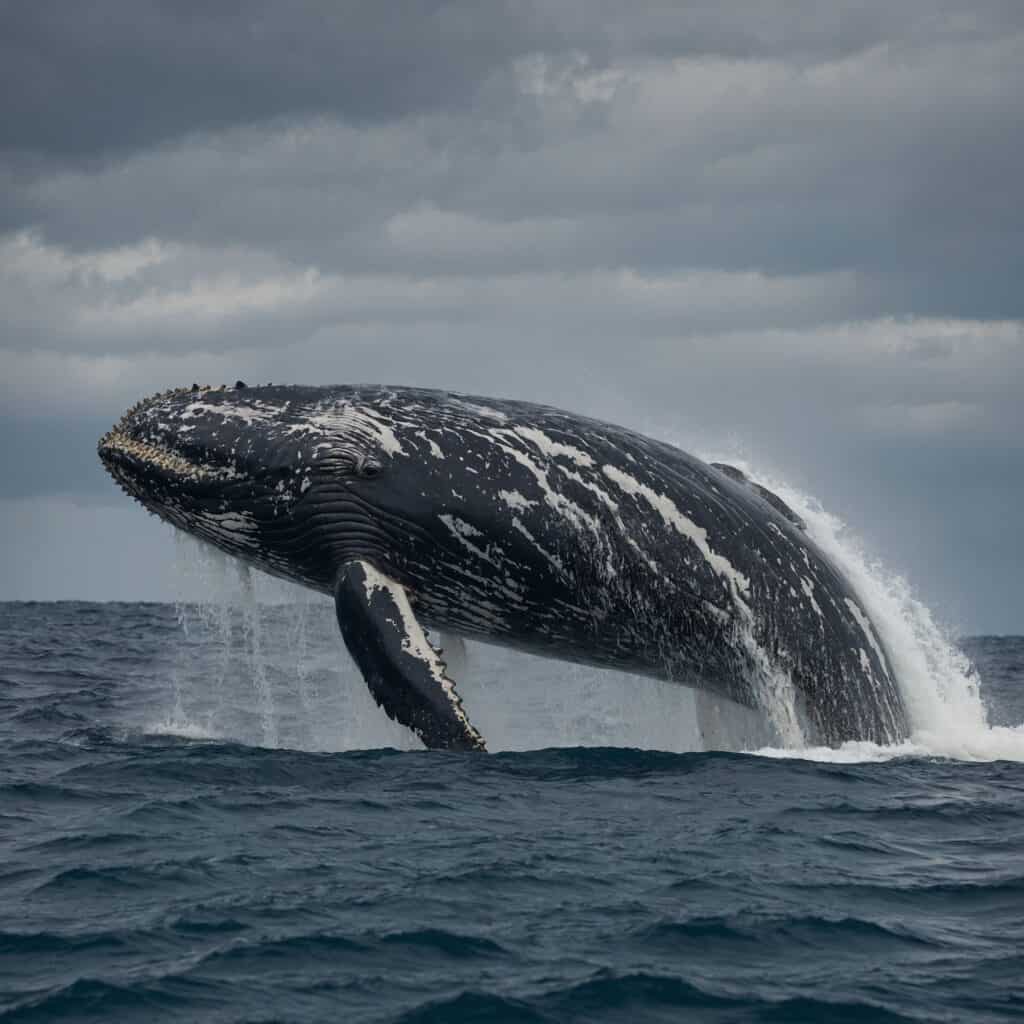
The humpback whale embarks on one of the longest migrations in the animal kingdom, covering over 16,000 miles annually. These massive creatures travel from their feeding grounds in the cold waters of the Arctic and sub-Arctic regions to tropical and subtropical waters like those near Hawaii, Mexico, and Japan to mate and give birth. The reason for migrating to warmer regions is the safety and survival of newborn calves, as they are vulnerable to orca attacks and cold waters. They are also known for their impressive breaching behavior during these long journeys. They navigate using their strong sense of geomagnetic orientation and acoustic signals. Despite the obstacles, including ship strikes and ocean noise, humpbacks faithfully return to the same regions each year. Their migrations help link various marine ecosystems, with significant ecological benefits. Some have been recorded traveling as much as 25,000 miles round trip.
Leatherback Sea Turtle (Dermochelys coriacea)

Leatherback sea turtles, the largest of all sea turtles, are famous for their extraordinary migrations, which span up to 10,000 miles annually. They breed on tropical beaches but migrate to colder waters, such as the northern Atlantic and Pacific Oceans, to feed on jellyfish. They can regulate their body temperature, allowing them to survive in waters too cold for other turtle species. During migration, they face significant threats such as plastic pollution and fishing gear entanglements. Remarkably, they use geomagnetic navigation to return to the exact beaches where they hatched decades earlier to lay their eggs. Their ability to travel such vast distances plays a crucial role in maintaining the balance of marine ecosystems.
Grey Whale (Eschrichtius robustus)
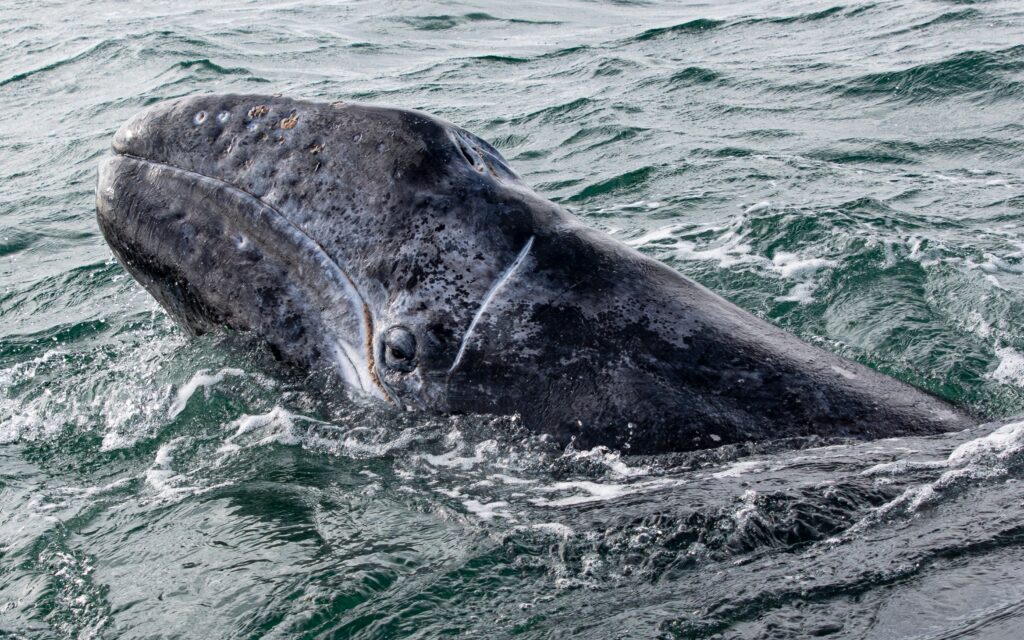
The grey whale undertakes a remarkable round-trip migration of up to 14,000 miles each year. They move between the feeding grounds of the Bering and Chukchi Seas and the warmer breeding waters off Baja California, Mexico. Calves are born in these warmer, shallow lagoons where they are safer from predators like orcas. During this migration, they travel along the North American coast, sticking close to shorelines. Their slow-moving, bottom-feeding behavior enriches coastal ecosystems by redistributing nutrients as they disturb sediment. Despite the long distances and challenges like shipping routes and predation, they continue this ancient migratory journey, which is vital for their survival. Their populations have rebounded after near extinction due to commercial whaling.
Chinook Salmon (Oncorhynchus tshawytscha)
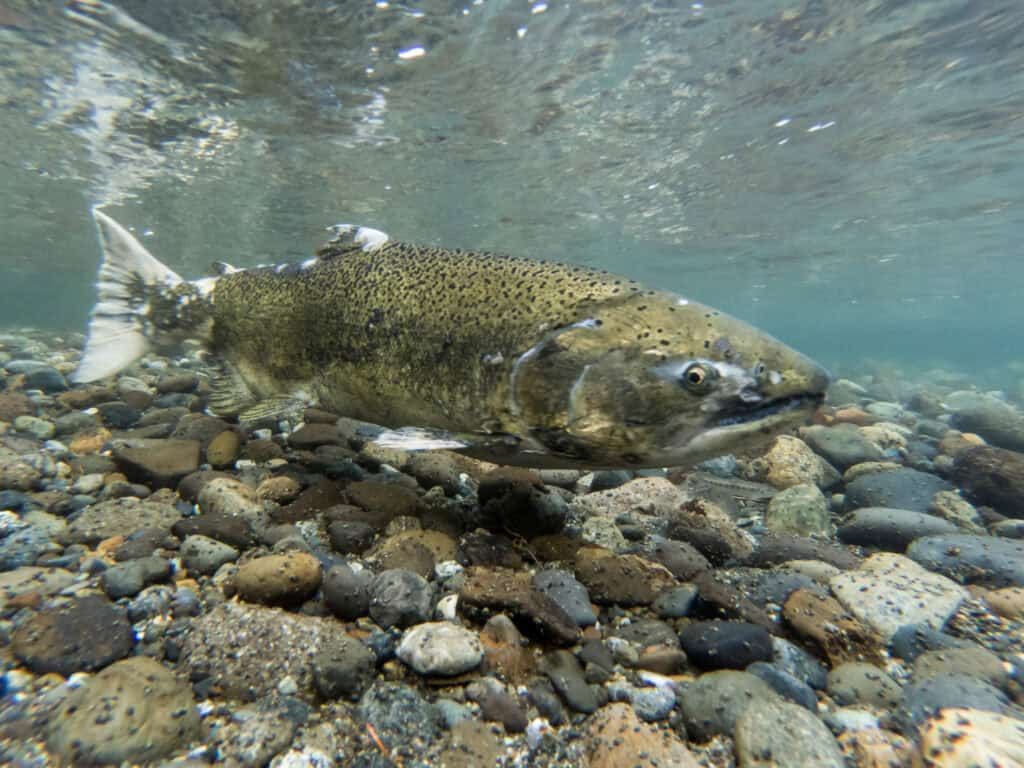
Chinook salmon embark on one of the most grueling migrations, traveling over 1,000 miles from the Pacific Ocean to the freshwater rivers where they spawn. Born in rivers, they spend several years at sea before returning to their natal streams, guided by their keen sense of smell. The journey is perilous, with obstacles like dams, predators, and strong currents, but it is crucial for their reproductive cycle. Once they reach their spawning grounds, they lay eggs and then die, providing nutrients to their freshwater environment. This process is essential for maintaining the health of aquatic ecosystems, as it supports a range of wildlife from bears to birds. Climate change and habitat disruption threaten the future of this iconic migratory species.
Green Sea Turtle (Chelonia mydas)
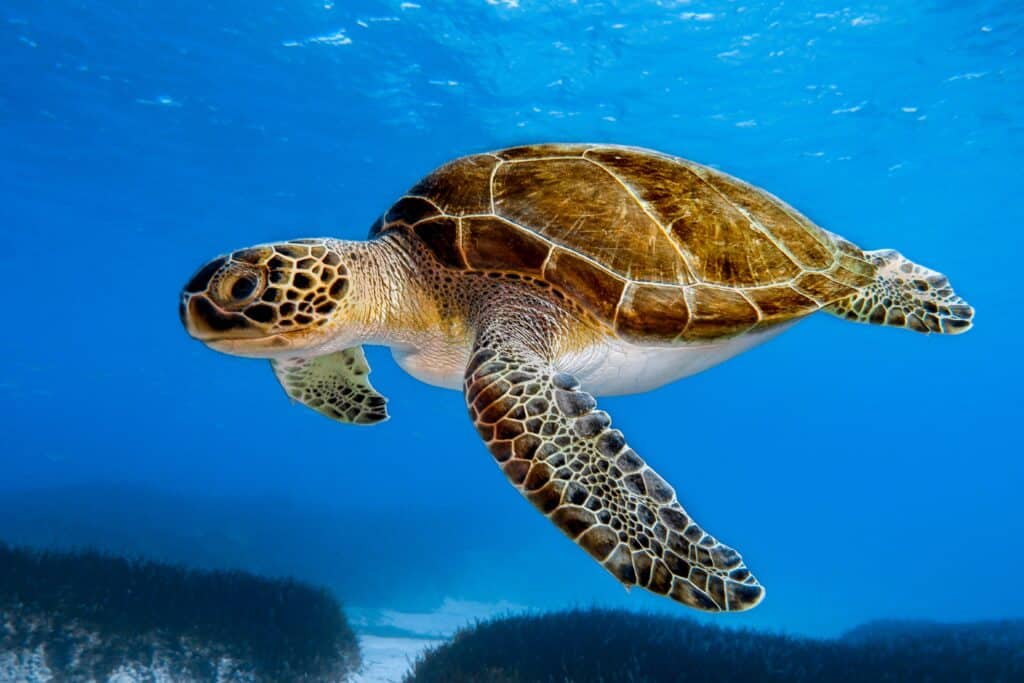
Green sea turtles migrate vast distances between their foraging areas and nesting beaches. Found in tropical and subtropical seas, they primarily feed on seagrass and algae in coastal regions, then travel to sandy beaches to nest. Females return to the beaches where they were born, a process known as natal homing, guided by geomagnetic cues. They can travel over 1,600 miles between feeding and breeding areas, with key routes including journeys across the Pacific from the Galapagos Islands to the coast of Central America. Their migrations are critical for the health of coral reef ecosystems as they help control seagrass and algae growth.
Bluefin Tuna (Thunnus thynnus)
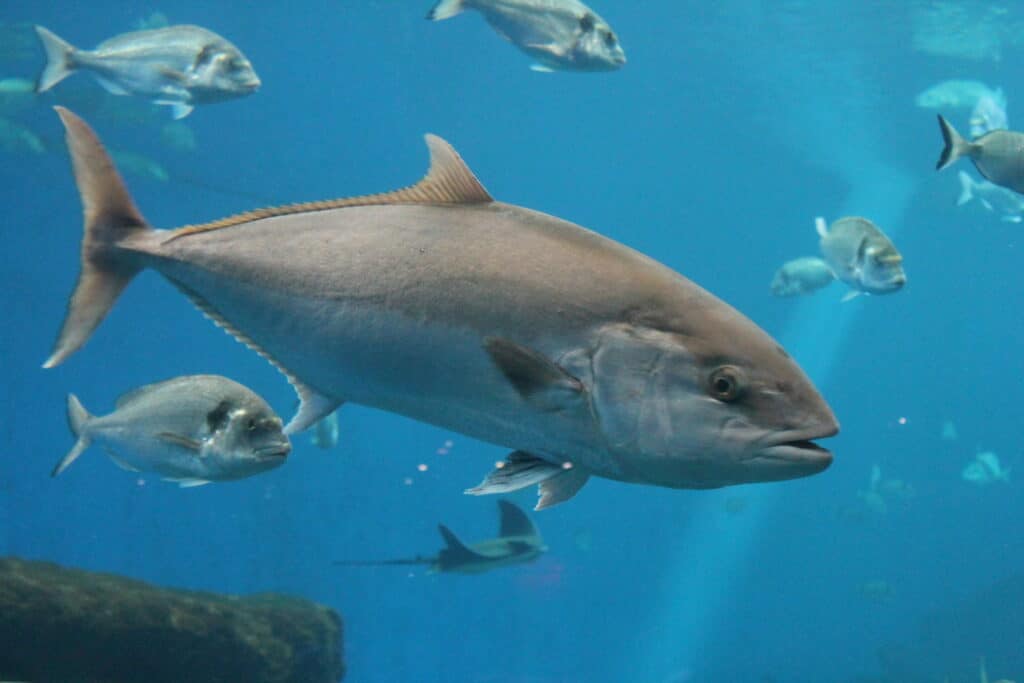
Bluefin tuna are renowned for their impressive migratory journeys, covering thousands of miles across the Atlantic Ocean. These powerful swimmers can travel from the western Atlantic near the Gulf of Mexico and the Mediterranean Sea to the cooler waters of the North Atlantic, where they feed. Their migration is driven by the search for food and breeding sites. They are capable of crossing entire ocean basins multiple times in their lifespan, navigating using environmental cues such as water temperature and ocean currents. Unfortunately, overfishing poses a significant threat to bluefin tuna, as they are highly prized in the global sushi market.
Whale Shark (Rhincodon typus)
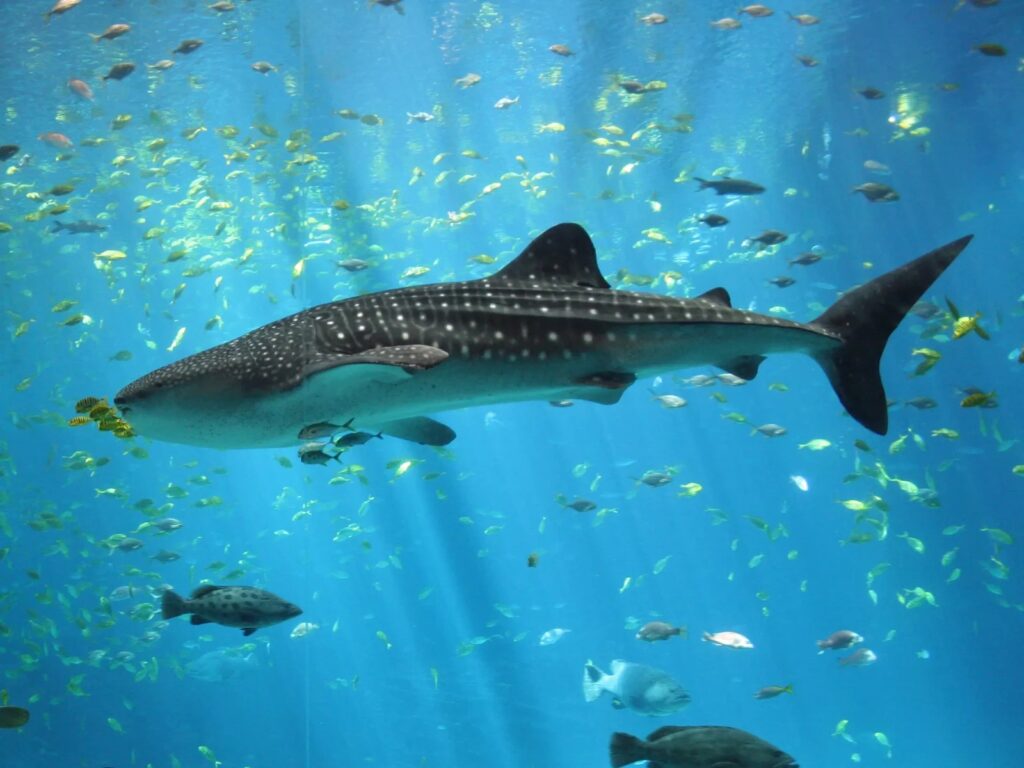
The whale shark, the largest fish in the ocean, undertakes extensive migrations to find food. These gentle giants travel across tropical and warm temperate oceans, following plankton blooms and small fish schools, their primary food sources. Whale sharks can cover thousands of miles, with some individuals documented migrating between the Indian Ocean and the Pacific. They are often sighted near the coasts of Mexico, the Philippines, and the Maldives. Despite their size and slow-moving nature, they face numerous threats, including boat strikes and bycatch in fishing operations. Their migration patterns remain poorly understood, but tracking efforts reveal their movements are crucial for maintaining marine biodiversity.
Arctic Tern (Sterna paradisaea)
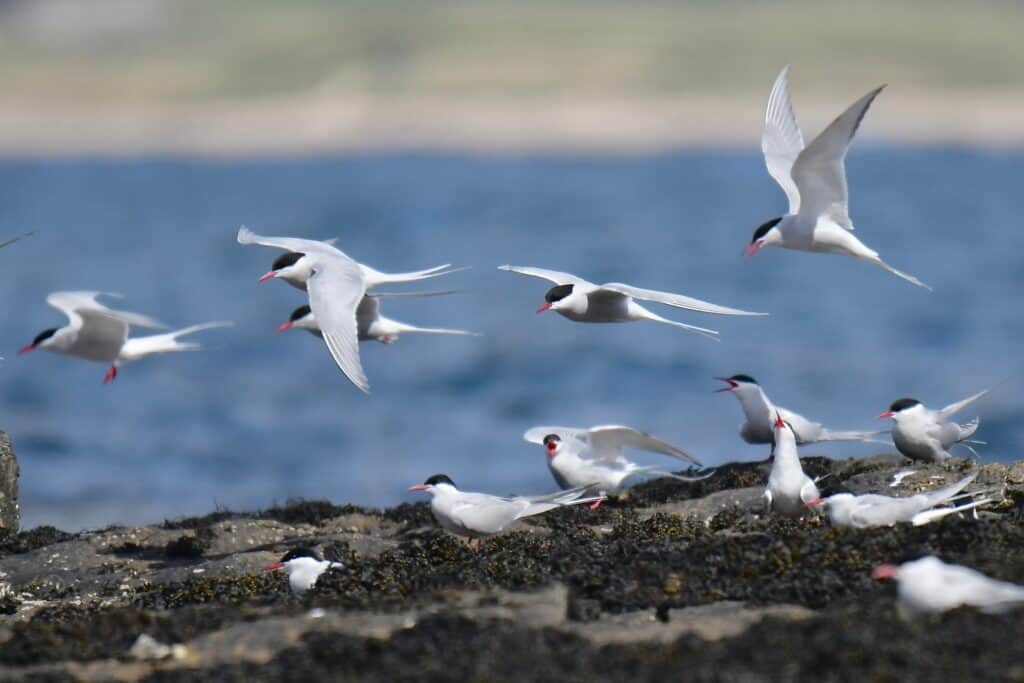
The Arctic tern has the longest known migration of any animal, traveling over 44,000 miles round trip between its breeding grounds in the Arctic and its wintering grounds in Antarctica. This incredible journey allows the tern to experience two summers each year, maximizing its exposure to sunlight. They fly across multiple oceans, stopping briefly to feed on fish and small invertebrates. Their migration is energetically demanding, but their lightweight, aerodynamic bodies make long-distance flight efficient. Climate change poses a threat to their feeding grounds, especially as fish populations shift. Their long migrations are crucial for their breeding success, linking polar ecosystems with distant oceanic feeding areas.
Oceanic White-Tip Shark (Carcharhinus longimanus)
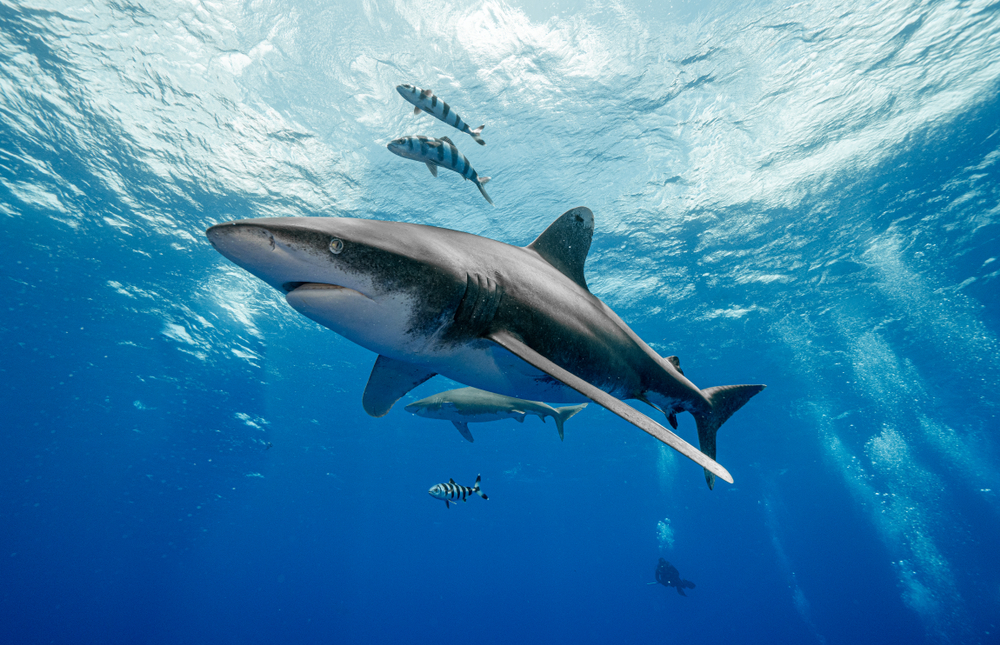
Oceanic white-tip sharks are highly migratory, traveling across vast stretches of the open ocean. They are commonly found in tropical and warm temperate waters but migrate between feeding grounds based on prey availability. They often follow schools of fish such as tuna and squid, crossing entire ocean basins. Their migration is vital for maintaining healthy fish populations, as they serve as apex predators. However, the species has been heavily impacted by overfishing, particularly due to demand for shark fins. Conservation efforts, including the banning of shark finning, aim to protect these vital ocean travelers.
European Eel (Anguilla anguilla)
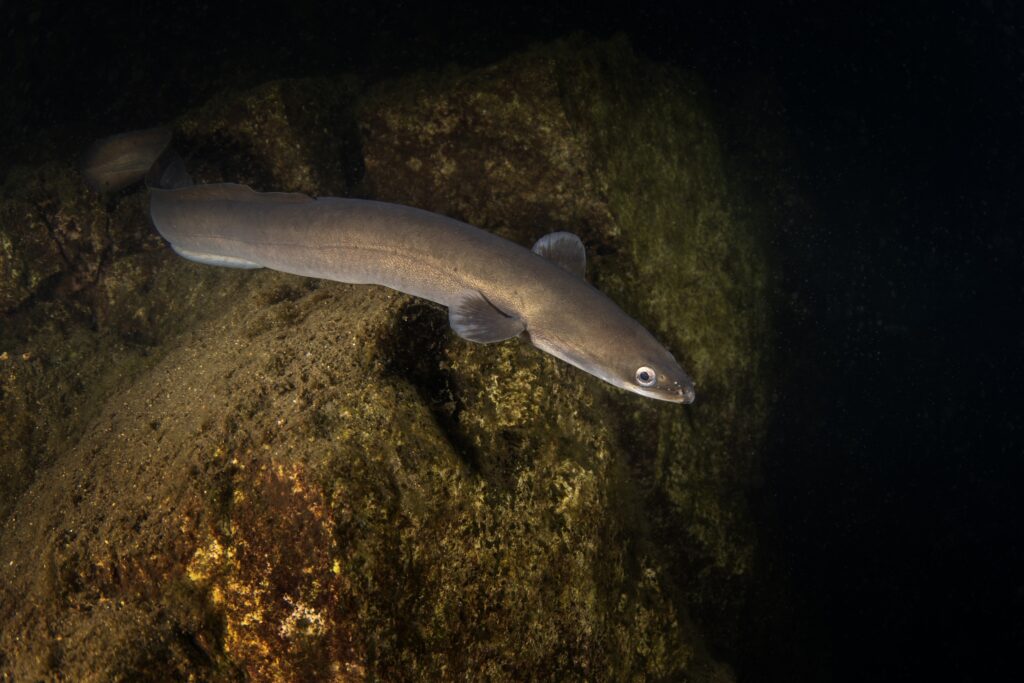
The European eel undertakes one of the most mysterious migrations, traveling over 3,700 miles from European rivers to the Sargasso Sea in the Atlantic Ocean to spawn. This migration is particularly enigmatic as much of the journey takes place in deep, remote parts of the ocean, making it difficult for scientists to track their movements. After spawning, the adult eels die, and the young, known as glass eels, make the return journey to Europe, traveling back to freshwater rivers where they mature. This migration can take several years, and eels face numerous challenges such as habitat loss and overfishing. Their complex lifecycle is tied to ocean currents, which help guide them on their long journey. It is critically endangered due to these environmental pressures, making their migration even more perilous.
Loggerhead Sea Turtle (Caretta caretta)
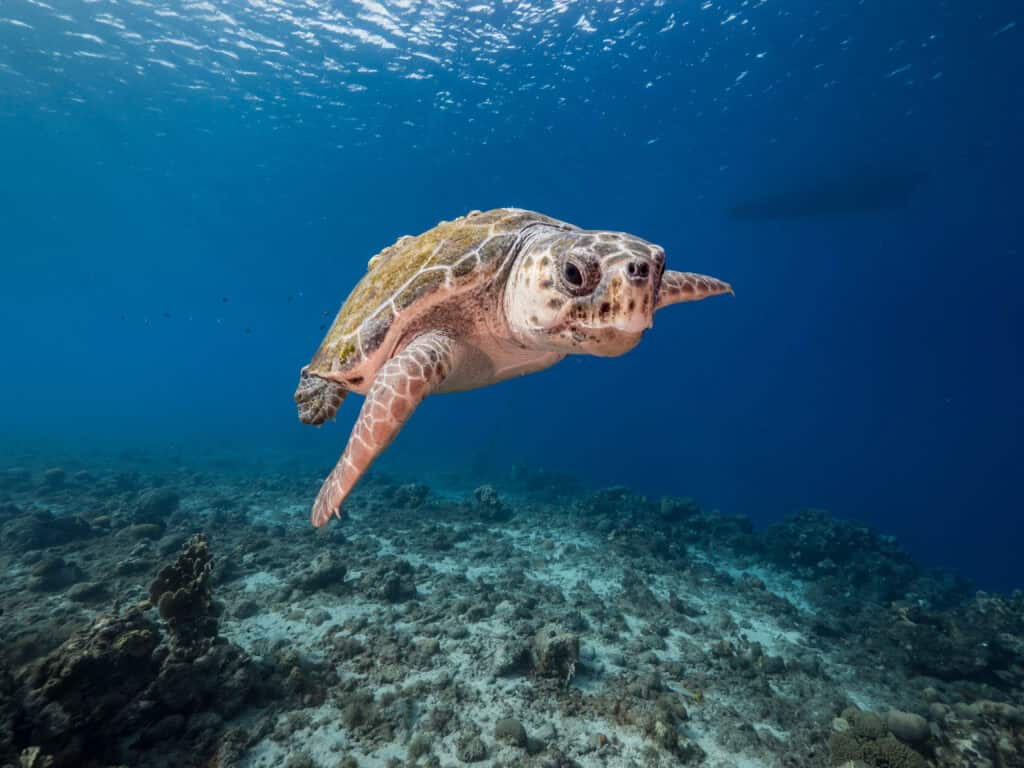
Loggerhead sea turtles are known for their incredible migratory journeys, spanning thousands of miles across the open ocean. They are born on beaches in tropical and subtropical regions, but after hatching, they enter the ocean and embark on a migration that can take them across entire ocean basins. Adult females return to the beaches where they were born to lay their eggs, a phenomenon known as natal homing. They follow ocean currents, particularly the Gulf Stream in the Atlantic, which helps them conserve energy as they travel. They feed on jellyfish, crustaceans, and fish along the way, making stopovers in rich feeding areas. Despite their navigational skills, they face significant threats from fishing nets, pollution, and coastal development.
Atlantic Blue Marlin (Makaira nigricans)

The Atlantic blue marlin is a highly migratory species, traveling across the Atlantic Ocean in search of food and breeding grounds. These majestic fish, known for their long, spear-like bills, migrate between the warm tropical waters where they spawn and the cooler temperate regions where they feed on schools of fish such as mackerel and tuna. They can cover vast distances, often traveling thousands of miles annually. Their migration is influenced by ocean currents, which they use to move efficiently across the open ocean. They are popular in sport fishing, but overfishing has put pressure on their populations. Conservation efforts, including catch-and-release practices, aim to protect this species while maintaining the balance of marine ecosystems.
This article originally appeared on Rarest.org.
More from Rarest.org
20 Most Endangered Mammals in the Wild

The natural world is home to countless remarkable mammals, many of which are facing the threat of extinction. These endangered species, from the elusive Sumatran rhino to the rare Bactrian camel, are struggling to survive due to habitat loss, poaching, and other human activities. Read More.
17 Historic Libraries You Should Explore

Exploring historic libraries is a journey through time, offering a glimpse into the rich heritage of knowledge and culture. These libraries, with their vast collections and stunning architecture, have preserved countless treasures and stories from the past. Read More.
12 Most Valuable Vintage BMWs at Auction

Vintage BMWs are a treasure trove for car enthusiasts and collectors alike, often fetching impressive prices at auctions due to their rarity, design, and performance. From iconic roadsters to classic sports cars, these vehicles represent the pinnacle of automotive engineering and luxury. Read More.
